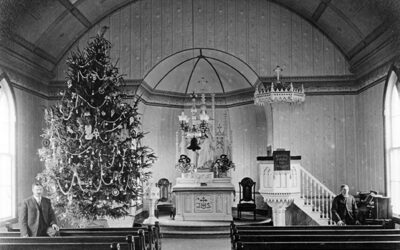The process of taking over the lands in the public domain known as Nebraska Territory was connected with their division into ever smaller parcels, and marking those parcels on the ground so that they might be converted into property. The system used to accomplish this was known as the United States Land Survey. First used in the old Northwest Territory, it is quite unlike the old metes and bounds methods used over most of the eastern United States in that it is based upon a geometric grid. The grid was efficient in that major boundaries could be designated using longitude or latitude from an office in Washington, and parcels could be designated on paper without reference to any condition of the land itself. But a flat grid cannot be marked on a curved surface. (Straight lines on earth tend to divide the globe into hemispheres, like the equator, and lines intended to be parallel must be “corrected” in order for them not to converge.) So the surveys were done in several stages to insure that the individual parcels conformed as closely as possible to square mile sections.
The coordinates from which all Nebraska surveys are conducted are the Base Line and the Sixth Principal Meridian. The Base Line was established along the fortieth degree of latitude, which became the southern border, while the Meridian was established 108 miles west of the Missouri River along the Base Line. The crossing of these two lines defined directions inherent in the descriptions of the surveyed lands for legal purposes: Land in Nebraska was north of the Base Line, and in Kansas it was south; and lands in both states were either east or west of the Meridian.
The next set of lines in the survey were called Standard Parallels and Guide Meridians. The Standard Parallels were run at twenty-four-mile intervals parallel with the Base Line of latitude, while the Guides were run north-south at forty-eight-mile intervals on both sides of the Principal Meridian. The intersections of these lines established a large grid which controlled the subdivision of that grid into the smaller one. The Standard Parallels were used as “correction” lines for the meridians, to compensate for the curvature of the earth. On a map you can see this correction in the shift of township and section lines to the west as you look or travel northward.
Within the grid created by the Standards and Guides, an “external” survey established the six-by-six-mile township lines. The townships were then later divided by an “internal” survey, into thirty-six sections, with each section divided into quarters and quarter-quarters. Thus was a grid demarking nearly equally sized parcels laid off on the land, providing a ready-made and uniform system for describing those parcels.



